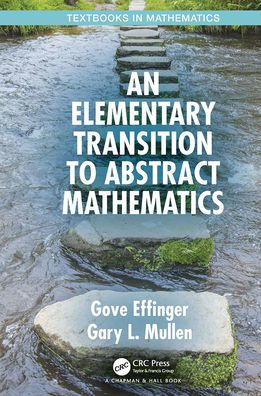An Elementary Transition to Abstract Mathematics will help students move from introductory courses to those where rigor and proof play a much greater role.
The text is organized into five basic parts: the first looks back on selected topics from pre-calculus and calculus, treating them more rigorously, and it covers various proof techniques; the second part covers induction, sets, functions, cardinality, complex numbers, permutations, and matrices; the third part introduces basic number theory including applications to cryptography; the fourth part introduces key objects from abstract algebra; and the final part focuses on polynomials.
Features:
- The material is presented in many short chapters, so that one concept at a time can be absorbed by the student.
- Two "looking back" chapters at the outset (pre-calculus and calculus) are designed to start the student’s transition by working with familiar concepts.
- Many examples of every concept are given to make the material as concrete as possible and to emphasize the importance of searching for patterns.
- A conversational writing style is employed throughout in an effort to encourage active learning on the part of the student.
An Elementary Transition to Abstract Mathematics will help students move from introductory courses to those where rigor and proof play a much greater role.
The text is organized into five basic parts: the first looks back on selected topics from pre-calculus and calculus, treating them more rigorously, and it covers various proof techniques; the second part covers induction, sets, functions, cardinality, complex numbers, permutations, and matrices; the third part introduces basic number theory including applications to cryptography; the fourth part introduces key objects from abstract algebra; and the final part focuses on polynomials.
Features:
- The material is presented in many short chapters, so that one concept at a time can be absorbed by the student.
- Two "looking back" chapters at the outset (pre-calculus and calculus) are designed to start the student’s transition by working with familiar concepts.
- Many examples of every concept are given to make the material as concrete as possible and to emphasize the importance of searching for patterns.
- A conversational writing style is employed throughout in an effort to encourage active learning on the part of the student.

An Elementary Transition to Abstract Mathematics
292
An Elementary Transition to Abstract Mathematics
292
Product Details
| ISBN-13: | 9781032475172 |
|---|---|
| Publisher: | CRC Press |
| Publication date: | 01/21/2023 |
| Series: | Textbooks in Mathematics |
| Pages: | 292 |
| Product dimensions: | 6.12(w) x 9.19(h) x (d) |
